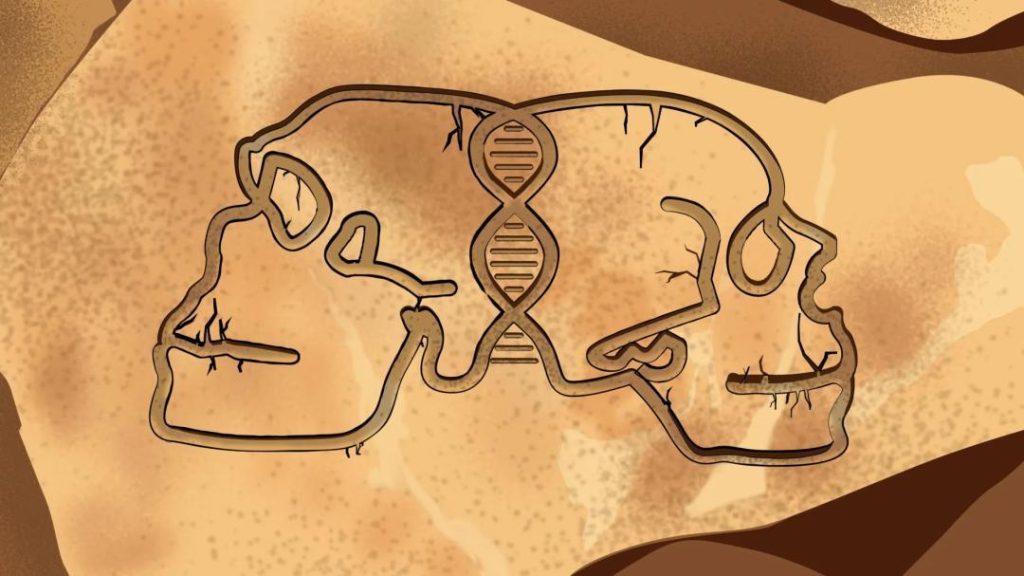
Modern Humans, Neanderthals Interbreeding for 200,000 Years: Study
For centuries, humans have been fascinated by the mysteries of our ancient ancestors. One of the most significant and intriguing questions has been whether modern humans, Homo sapiens, interbred with other extinct human species, such as the Neanderthals. In a groundbreaking new study, researchers have finally provided an answer to this question, and the results are staggering. According to the study, modern humans have been interbreeding with Neanderthals for over 200,000 years.
The study, which was published in the journal Science, used a cutting-edge genetic tool called IBDmix, which employs artificial intelligence (AI) to analyze the genetic data of 2,000 living humans, three Neanderthals, and one Denisovan. The researchers from the University of California, Los Angeles (UCLA), and the University of California, Berkeley, used this tool to identify three distinct waves of contact between modern humans and Neanderthals.
The first wave of contact occurred around 200,000-250,000 years ago, during the early stages of modern human evolution. According to the study, this initial contact may have been brief and limited, but it laid the foundation for future encounters. The second wave of contact took place around 100,000-120,000 years ago, during the Middle Pleistocene era. This wave was more significant, with evidence suggesting that Neanderthals and modern humans interacted more frequently and intensively.
However, it was the third and largest wave of contact that occurred around 50,000-60,000 years ago that had the most profound impact on the genetic makeup of modern humans. During this period, Neanderthals and modern humans not only interbred but also shared genes, cultural practices, and technologies. The study suggests that this wave of contact was so significant that it left a lasting legacy in the genetic code of modern humans.
The researchers used a variety of genetic markers to identify the different waves of contact. They analyzed the levels of Neanderthal DNA in the genomes of 2,000 living humans, as well as the genetic variation patterns in three Neanderthals and one Denisovan. By comparing the genetic data, they were able to reconstruct the history of interbreeding between modern humans and Neanderthals.
The study’s findings have significant implications for our understanding of human evolution and the history of our species. For centuries, scientists have debated the extent to which modern humans interbred with other extinct human species. While some researchers have argued that interbreeding was limited and isolated, others have suggested that it was more widespread and significant.
The study’s findings provide strong evidence for the latter, suggesting that interbreeding between modern humans and Neanderthals was not only common but also prolonged. The fact that Neanderthal DNA is present in the genomes of many living humans today, including in populations that are geographically distant from each other, suggests that interbreeding was a widespread phenomenon.
The study’s authors also used their findings to shed light on the cultural and technological exchange that occurred between modern humans and Neanderthals. They suggest that the two species not only interbred but also shared knowledge, skills, and innovations. For example, the study found that modern humans and Neanderthals shared similar genetic variants related to skin pigmentation, which suggests that they may have exchanged genetic information related to skin color.
The study’s findings also have implications for our understanding of human diversity and the origins of modern human populations. For centuries, scientists have debated the origins of modern human populations, with some arguing that they originated in Africa and others suggesting that they originated in Asia or Europe. The study’s findings suggest that modern human populations may have originated in multiple regions, with interbreeding between modern humans and Neanderthals playing a significant role in shaping the genetic diversity of modern human populations.
In conclusion, the study’s findings provide strong evidence for the interbreeding of modern humans and Neanderthals over the past 200,000 years. The study’s use of IBDmix, a cutting-edge genetic tool, has allowed researchers to reconstruct the history of interbreeding between modern humans and Neanderthals with unprecedented precision. The study’s findings have significant implications for our understanding of human evolution, the history of our species, and the origins of modern human populations.
Source:
https://www.sciencedaily.com/releases/2025/07/250713032519.htm






